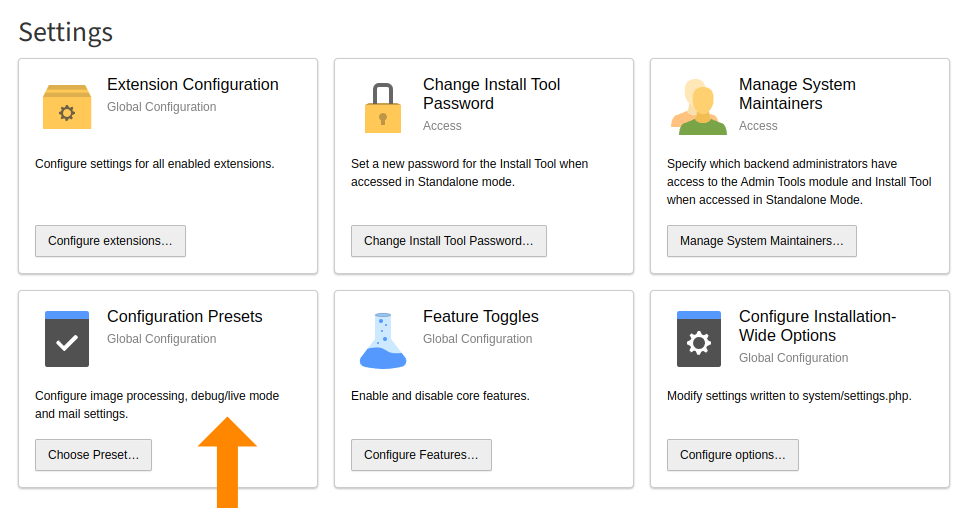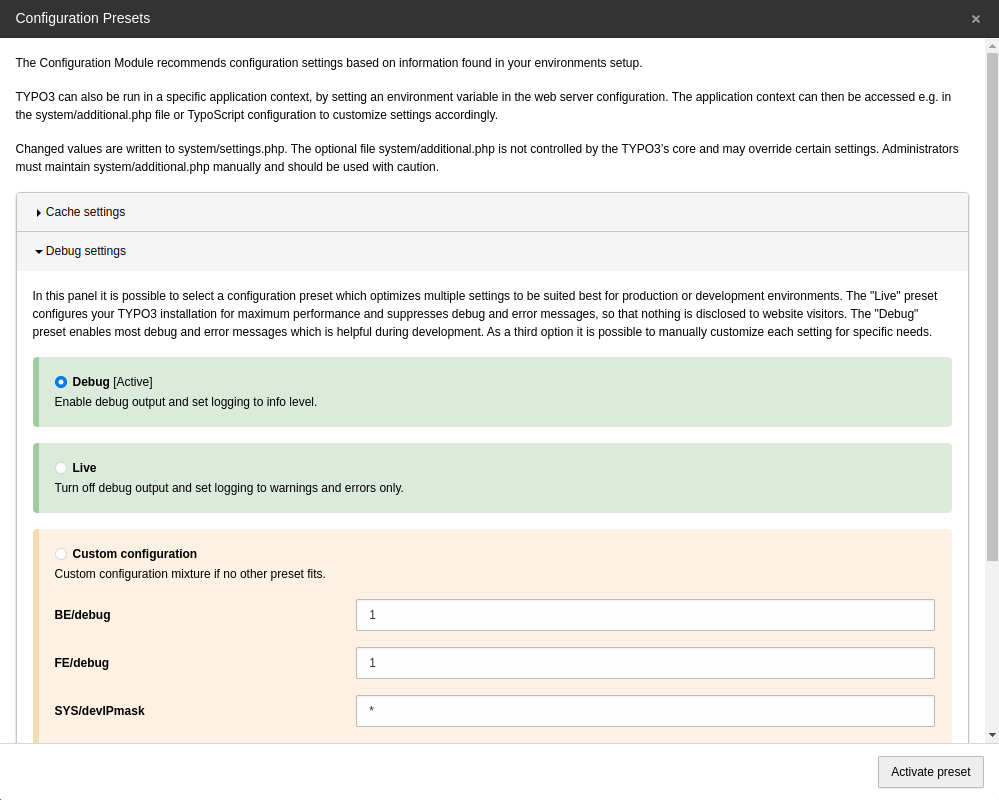TYPO3
Resetting Passwords
Backend Administrator Password
When the password for a backend user needs to be reset, log into the backend with an alternative user and use the Administration > Users tool to reset the users password. Note that only backend users with administrative rights can access the user management tool to make this change.
Changed in version 14.0
Until TYPO3 V14 this module was called System > Backend Users. See also: Feature: #107628 - Improved backend module naming and structure.
If an alternative administrator account is not available or it doesn't have the appropriate access, the Install Tool can be accessed directly using the following address to create a new administrative user:
https://example.com/typo3/install.phpThe Install Tool requires the "Installation Password" that would have been set when TYPO3 was installed.

Enter the install tool password
Once logged in to the Admin Tool go to Maintenance > Create Administrative User and select Create Administrator. In this dialogue you can create a new administrative user.

Create a new administrative user

Fill in the fields for the new administrative user
Use this new administrator account to log into the TYPO3 backend. In the module Backend Users you can change the passwords of existing users, including administrators.
Install Tool Password
New in version 14.0
You can also use command vendor/bin/typo3 install:password:set to change the install tool password.
Write access to config/ (in Classic mode installations
typo3conf/) is required to reset the
Install Tool password.
Before editing this file, visit:
https://example.com/typo3/install.phpEnter the new password into the dialogue box. As the new password is not correct, the following response will be returned:
"Given password does not match the install tool login password. Calculated hash:
$argon2i$v=xyz"Copy this hash including the
$argon2i part and any trailing dots.
Then edit config/ and replace the following
array entry with the new hashed password:
'BE' => [
'installToolPassword' => '$argon2i$v=xyz',
],Note
If the new install tool password does not work, check if it gets overridden
later in the file config/ or in the
file config/
if one exists. If you can still not log into the install tool check if
there are errors in the logs when debugging is enabled.
Debug Settings
During troubleshooting, in the "Settings > Configuration Presets" section of the Install Tool, under "Debug settings", the "Debug" preset can be change to show errors in the frontend.

Choose a configuration preset

Choose the debug preset
The following TypoScript setting can also be added to the root TypoScript for the site to show additional debug information. This is particularly useful when debugging Fluid errors:
config.contentObjectExceptionHandler = 0See also
Important
Once debugging has been completed, make sure to remove any debug Typoscript and set Debug setting back to 'Live'.
Additionally, the following logs should be checked for additional information:
- Webserver log files for general problems (e.g.
/var/orlog/ apache2 /var/on Linux based systems)log/ httpd - TYPO3 Administration log in Administation > Log via TYPO3's backend.
- TYPO3 logs written by the Logging Framework located in
var/orlog typo3temp/depending on the installation setup.var/ log
Caching
Cached Files in typo3temp/
TYPO3 generates temporary "cached" files and PHP scripts in <var-
(either typo3temp/ or var/ depending on the installation).
You can remove the entire <var- directory at any time; the directory
structure and all the caches will be re-written on the next time a visitor
accesses the site.
A shortcut to remove these caches can be found in the Install Tool, under Important Actions. This might be useful in the event your cache files become damaged and your system is not running correctly. The Install Tool won't load any of these caches or any extension, so it should be safe to use regardless of the corrupt state of the Caches.
Amongst other caches, under <var-
you will find:
-rw-rw---- 1 www-data www-data 61555 2014-03-26 16:28 ext_localconf_8b0519db6112697cceedb50296df89b0ce04ff70.php
-rw-rw---- 1 www-data www-data 81995 2014-03-26 16:28 ext_tables_c3638687920118a92ab652cbf23a9ca69d4a6469.phpThese files contain all ext\_ and
ext\_ files of the installed extensions
concatenated in the order they are loaded. Therefore including one of
these files would be the same as including potentially hundreds of PHP
files and should improve performance.
Possible Problems With the Cached Files
Changing the absolute path to TYPO3
If you change the path of the TYPO3 installation, you might receive similar errors that include "Failed opening ..." or "Unable to access ...". The problem is that absolute file paths are hard-coded inside the cached files.
Fix: Clean the cache using the Install Tool: Go to "Important Actions" and use the "Clear all caches" function. Then hit the page again.
Changing Image Processing Settings
When you change the settings for Image Processing (in normal mode),
you must take into account that old images may still be in the
typo3temp/ folder and that they prevent new files from being
generated! This is especially important to know, if you are trying to
set up image processing for the very first time.
The problem is solved by clearing the files in the typo3temp/
folder. Also make sure to clear the database table "cache_pages".
